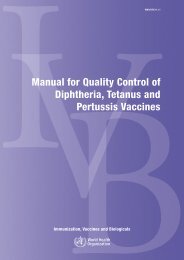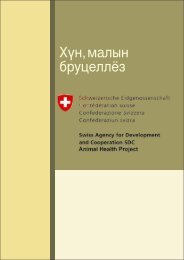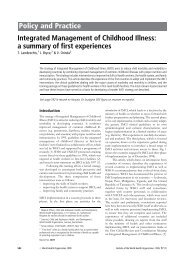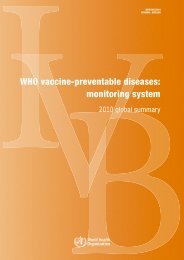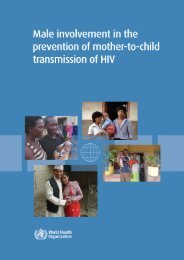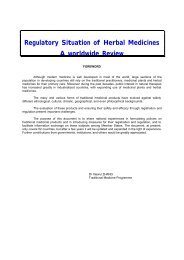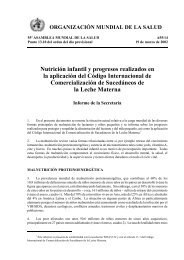IPDE - Extranet Systems - World Health Organization
IPDE - Extranet Systems - World Health Organization
IPDE - Extranet Systems - World Health Organization
You also want an ePaper? Increase the reach of your titles
YUMPU automatically turns print PDFs into web optimized ePapers that Google loves.
121 Administration of the <strong>IPDE</strong><br />
the <strong>IPDE</strong> and have achieved a basic proficiency after having given about<br />
10 interviews. As they examine more patients, they will find themselves<br />
making less use of the guides for questioning and scoring, but occasional<br />
reference to them is to be expected even by the seasoned examiner. We<br />
strongly recommend that those who wish to obtain the optimal training<br />
in the use of the <strong>IPDE</strong>, enrol1 in the course offered at one of the worldwide<br />
WHO training centres.<br />
Administration of the <strong>IPDE</strong><br />
If the interview should take more than one to one and a half hours, there<br />
is danger that the examiner will not pursue responses with the same alertness<br />
and thomugbness, and that the subject's replies will become briefer<br />
and more perfunctory. In those circumstances the interview should be<br />
given on more than one occasion, if possible. However, interruptions in<br />
the middle of a section should be avoided.<br />
The <strong>IPDE</strong> can only be administered properly when the examiner conducts<br />
an adequate clinical examination of the subject with appropriate<br />
probing to solicit examples, anecdotes, and additional details. This<br />
requires a thorough knowledge of the scope and meaning of each criterion<br />
and a corn application of the scoring guidelines. Ultimately.<br />
many of these become familiar to examiners, and there is no need townstantly<br />
refer to them during the interview.<br />
Initial replies of the subject that suggest a positive rating are m ly<br />
sufficient for scoring a criterion. They must be supplemented and supposed<br />
by convincing descriptions or examples. Examiners must use<br />
their clinical judgement to determine the length of the descriptions and<br />
the number of examples that are required. When in doubt, they should<br />
always ask for more rather than less. However, they should avoid 'leading<br />
the witness,' or being influenced by a 'halo' effect. For example, if<br />
the subject has already met three of the required four criteria for a diagnosis,<br />
the examples regarding a possible fourtb criterion should not be<br />
viewed any differently than if the subject had previously not met any criterion.<br />
Interviewers should not hesitate to tactfully inquire about apparent<br />
contradictions in responses. Although the examiners should score the<br />
interview as they go along, they should comt the scoring of an earlier<br />
item, when subsequent information elicited during the interview requires<br />
it. Recording the subject's responses verbatim is not required, but it can<br />
pmvide a permanent record of a considerable amount of useful information,<br />
that is not conveyed by diagnoses or dimensional scores alone.




